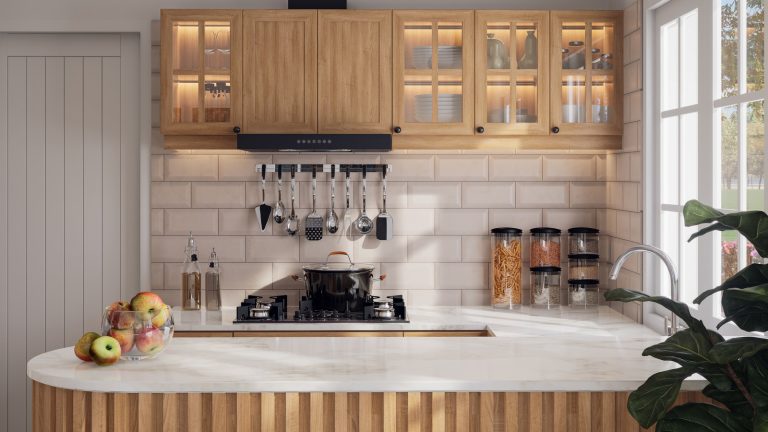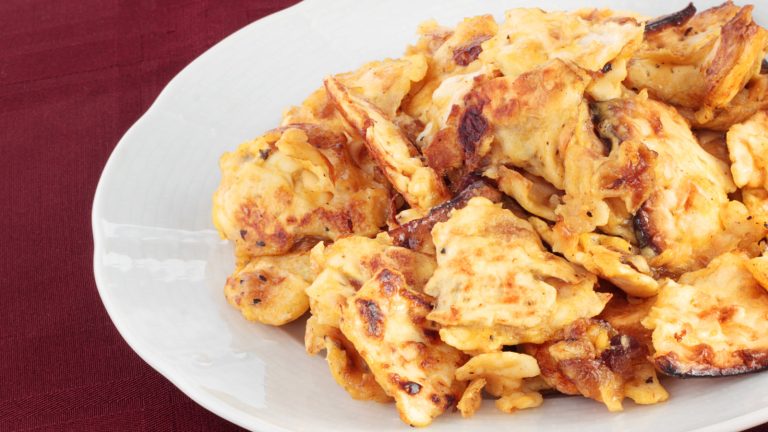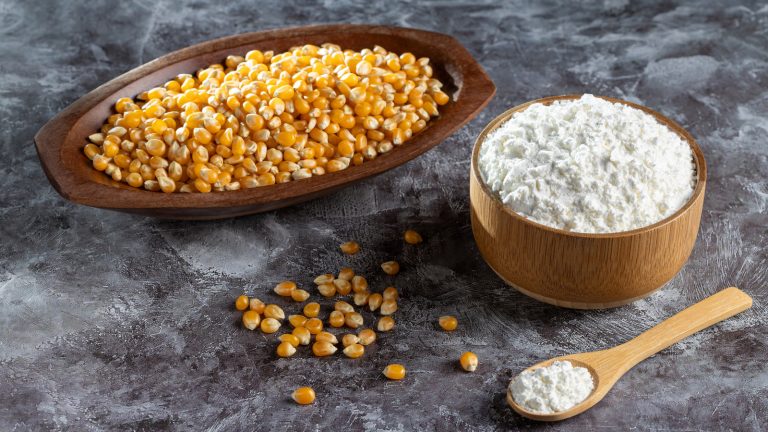When it comes to breathing new life into outdated spaces, few designers are as inspiring as Joanna Gaines. With her keen eye for detail and her knack for blending rustic warmth with modern practicality, Joanna has become a go-to source for homeowners looking to remodel key spaces in their homes, especially the kitchen. Her overall approach to reworking these rooms proves that even the most time-worn spaces can be transformed into inviting, stylish, and functional rooms that reflect history and personality.
Joanna’s signature style is a mix of modern farmhouse elegance, vintage accents, and thoughtful design, and through her various shows, she has helped redefine what it means to renovate an older kitchen. Instead of gutting everything and starting from scratch, she emphasizes honoring the bones of the space. Whether it’s preserving original kitchen cabinets, restoring antique hardware, or showcasing aged wood beams, Joanna demonstrates that old elements can coexist beautifully with new amenities. So, whether you are restoring a 1940s bungalow or simply adding some old-world charm to a newer home, these are the 12 best tips we learned from Joanna Gaines for remodeling vintage kitchens.
1. Make the space work for you
Joanna Gaines often makes it a point to remind her clients that a home should adapt to the people living in it, not the other way around. As she explained on Instagram: “Your home evolves and the story of your family evolves, you want to make [your] spaces work for you.” This design tip is especially crucial with vintage kitchens, where modern needs may not easily be met. As a result, Joanna encourages homeowners to reimagine the space with their current lifestyle in mind, but in a way that means the original character of the kitchen is not lost. Opting to expand a prep area and incorporate more cohesive storage are both great ways to make your vintage kitchen work for you.
Instead of preserving outdated features, Joanna recommends embracing the beauty of an older kitchen while updating it to function better. Even simple adjustments such as repositioning appliances for improved workflow or replacing worn-out countertops can breathe new life into vintage kitchens, allowing them to feel both historic and highly usable. Joanna also stresses that a remodeled kitchen should not feel static and suggests personalizing with evolving design touches, like rotating seasonal decor, upgrading light fixtures, or repurposing a corner to fit a new need, such as a coffee bar or homework station.
2. Embrace neutral color palettes
When starting a remodeling project, Joanna Gaines uses soft, muted tones, such as whites, creams, and gentle grays, which help establish a calm and cohesive backdrop. In her Magnolia Blog, Joanna writes, “Painting the walls of your home a shade of white […] can provide a neutral and clean foundation to design around that other colors can’t, giving you more freedom to get creative with decor.” This is especially true when beginning a vintage kitchen makeover. By embracing neutral color palettes, we can help historic details such as antique fixtures or rustic woodwork to stand out.
Along those same lines, a neutral base also offers incredible flexibility, making it easy to add personality through accessories, artwork, or seasonal decor without overwhelming the space. In vintage kitchens, the charm often comes from incorporating a mix of different materials and eras. With a neutral foundation, you can seamlessly tie everything together, while not forgoing the intentional feel and balance of the space. Not only does this strategic use of color reflect Joanna’s broader design philosophy of honoring the past while making room for modern life, but it also paves the way for future updates without having to do another complete makeover.
3. Add a pop of color
While Joanna Gaines is known for her love of neutral palettes, she also understands the power a little color can bring to a space. Not only does a dash of something eye-catching add energy to a vintage kitchen, but it also enhances a space without overwhelming its original charm. Aged tile, antique fixtures, and weathered wood, for instance, are commonplace in older kitchens and already tell a fascinating story — but with the addition of color, you can easily create balance without overshadowing the original design. “Sure, you can’t go wrong with neutrals, but sometimes a pop of color is just what a space needs,” Joanna wrote on Instagram. This design tip is the quickest way to add playful, personal touches while still honoring the vintage character of the kitchen.
That said, Joanna often recommends introducing color through easily changeable elements such as painted cabinets, a statement backsplash, or some other vibrant detailing. Whether it’s a painted island or colorful vintage accessories, these elements can instantly refresh a space and highlight its best features. Even bold flooring choices or a patterned rug can bring depth to a space that might otherwise feel understated or monochromatic. Plus, the beauty of this tip is its accessibility. In another Instagram post, Joanna insists: “You don’t need a big budget or a 100-year-old home to infuse a little personality into your space.” So, remember, aim for a splash of color that can transform the atmosphere of your kitchen with minimal effort and cost.
4. Choose timeless materials
A core design principle that Joanna Gaines returns to often when embarking on a storied makeover or tackling a vintage kitchen remodel, is to invest in timeless materials. It’s not surprising to see Joanna incorporate classic elements like white marble countertops, subway tile backsplashes, aged brass, and reclaimed wood accents into her designs. These kinds of foundational pieces offer expert-crafted beauty and function, which are essential in a high-traffic area like the kitchen. In a blog post about one of her many vintage renovation projects, Joanna noted: “Rich, grounding materials, such as walnut wood and brass accents, give [spaces] a warm and timeless feel.”
These types of materials also offer durability and a sense that these design elements will stand the test of time. This long-term mindset is especially important in vintage kitchens, where preserving charm and character is crucial.
5. Create a functional layout
Unsurprisingly, many vintage kitchens were not designed with modern workflows in mind. One of Joanna Gaines’ best renovation and remodeling tips is to prioritize a layout that is both functional and visually harmonious. On an episode of “Fixer Upper,” Season 2, Joanna highlights the transformative power of smoothly designed open-plan spaces over awkward, choppy layouts. This philosophy guides her design process, prompting her to make thoughtful decisions about each major component of a space — in a kitchen, this means giving some real thought to where appliances go and how prep spaces are arranged. She often reconfigures cramped or outdated layouts to create a more open area — sometimes by removing walls, expanding countertops, or incorporating an island that doubles as a work zone and a communal gathering place.
However, Joanna never sacrifices a kitchen’s vintage character for functionality. Instead, she integrates smart design choices, like hidden storage, deep drawers, or custom cabinetry that blend seamlessly with older architectural features. Whether she’s working with a 1920s bungalow or a mid-century cottage, Joanna’s ability to balance form and function makes this tip one of her most impactful.
6. Highlight architectural details
Another great tip for remodeling vintage kitchens is to highlight the architectural details that make older homes unique. Rather than stripping away original features, Joanna Gaines leans into their character, preserving elements like exposed ceiling beams, original moldings, or antique hardware. These details tell the architectural story of the home and provide a natural foundation for her design choices, adding layers of authenticity that cannot be replicated with new materials alone.
Joanna’s aesthetic often favors features that feel warm, lived-in, and rooted in craftsmanship. She frequently incorporates natural wood, open shelving, and vintage-inspired design elements that complement the bones of the space. Even in small kitchens, Joanna believes that architectural details can have a big impact. Whether it’s restoring an original built-in pantry, showcasing beadboard walls, or simply refinishing old floors, these decisions create a sense of place that is both personal and enduring. It’s a reminder that great design doesn’t always mean adding more — it often means recognizing and elevating what’s already there.
7. Utilize open shelving
While remodeling, Joanna Gaines uses open shelving to blend utility with personality. Rather than relying solely on closed cabinetry, she incorporates open shelves to showcase meaningful pieces like handmade ceramics, glassware, cookbooks, potted herbs, and more. These open displays create a lived-in, approachable feel and instantly add warmth and charm to the space, allowing both functional and decorative items to shine.
Open shelves do more than just help style a space, however, as Joanna also sees them as an opportunity to promote intentional living. “Open shelving is a functional design element that is easy to love. It brings dimension, gives your space a finishing detail, and is also a space-saving and organization solution,” she writes in her Magnolia Blog. In vintage kitchens, where square footage may be limited, this thoughtful curation becomes even more important.
Furthermore, open shelves visually expand the room, which is especially helpful in older homes with lower ceilings or compact layouts. Joanna often places open shelving against neutral or textured backdrops like shiplap or white tile to draw the eye up when in the space. Here, you can opt to decorate with everyday dishes or collect vintage finds — regardless, the result is both practical and personal. This design tip allows you to turn a storage solution into a storytelling opportunity, which is another added bonus.
8. Select cohesive cabinet hardware
Cabinet hardware plays a much more important role in the look and feel of a space than most people realize. Far from being a purely functional detail, hardware is a key design element that pulls the entire kitchen together. In this sense, hardware is like the jewelry of the kitchen. In vintage remodels, where layers of old and new coexist, selecting the right knobs, pulls, and latches helps unify the look. “Using the same cabinet hardware and cabinet pulls on every cabinet in the kitchen — whether on the island or the perimeter — creates consistency,” Joanna Gaines notes in her blog. She also emphasizes that using consistent hardware creates visual harmony and strengthens the overall aesthetic.
What makes this particular tip so valuable is the fact that updating hardware is one of the simplest, most cost-effective ways to refresh a kitchen, yet it can dramatically elevate the space. Joanna’s approach shows that thoughtful design does not require a massive budget — just attention to detail. In vintage kitchens, especially, cohesive hardware can subtly highlight historic features without competing with them. And, by selecting hardware that feels timeless and well-matched, you can create a kitchen that feels curated, complete, and true to the home’s character.
9. Accessorize with light fixtures
A first-rate remodeling tip, which Joanna Gaines also recommends, is to accessorize with lighting. Rather than relying on a single overhead fixture, she layers multiple light sources — like pendant lights, sconces, under-cabinet lighting, and lamps — to create a warm, welcoming ambiance. This layered approach improves visibility for cooking and daily tasks while enhancing the personality of the space.
Joanna emphasizes that lighting is more than just functional, as it can set the overall tone of the kitchen. “What I love about lamps is that they help create that mood, that airiness and lightness,” she explained in an Instagram reel. In many of her renovation projects, statement lighting is used to introduce character and contrast. For example, a pair of aged brass pendants above a modern island can instantly draw the eye and anchor the room, while a vintage-inspired chandelier can bring elegance to a cozy dining nook. These fixtures often become design focal points, tying together elements from different eras in a seamless way.
Updating or adding light fixtures is one of the simplest, most budget-friendly ways to refresh a space without major renovation. Whether you’re illuminating a marble countertop or casting a glow on reclaimed wood shelves, the right lighting can make your vintage kitchen feel both timeless and intentionally designed.
10. Incorporate natural elements
The thoughtful use of natural elements to add warmth and texture (plus bring a bit of the outdoors indoors) is one of Joanna Gaine’s favorite ways to style a space. In rooms that may already feature timeworn surfaces like stone countertops or aged wood beams, Joanna opts to use greenery, earthy vintage items, or even a stunning vase of fresh-cut flowers to bring life into the kitchen. This infusion of nature softens harder edges, balances industrial materials, and creates a welcoming feel.
Joanna often suggests that even the simplest touches, like a bundle of eucalyptus in a ceramic jug, freshly picked fruits from the garden, or a collection of small potted herbs near the sink, can dramatically shift the energy of a room. Discussing her home style with Good Housekeeping, Joanna explains that incorporating plants, ceramic vases, or woven baskets into a decor plan provides “texture that feels heirloom, like it was always there, [and that] has a way of warming up a space in a really natural, organic way.” These tactile details help the kitchen feel not just styled, but truly lived-in.
11. Add personal touches
Incorporating personal touches is one of Joanna Gaine’s most enduring vintage remodeling principles — and it is also one of the most meaningful. As Joanna often stresses, storytelling is a central aspect of good design. This perspective elevates the kitchen from a purely functional zone to the lived-in heart of the home. Items that carry sentimental value, such as your grandmother’s rolling pin, framed handwritten recipes passed down through generations, handmade pottery, or even antique finds from a local flea market, are all perfect examples of pieces that help to connect the home’s past with its present while telling a story.
These kinds of personal touches also invite guests and family members alike to experience a space that feels intimate and layered, rather than styled to match a passing trend. So, don’t be afraid to pair modern lighting with antique furniture or use handcrafted tiles alongside more streamlined appliances in your vintage kitchen makeover. Doing so will showcase your style and make the space feel more curated without sacrificing usability.
12. Maintain a balance between old and new
Lastly, one of the best vintage kitchen remodeling tips Joanna Gaines suggests is finding the perfect balance between old and new. By preserving original features while introducing modern touches, Joanna creates spaces that feel both historic and suited for contemporary living. From integrating a sleek, modern farmhouse sink into a turn-of-the-century home to pairing reclaimed wood, shiplap, and subway tiles with stainless steel appliances, she creates rooms where contrasting eras work in harmony. This blend allows a space to retain its character while still feeling clean, updated, and highly livable.
As she’s explained on her blog, “Mixing old and new in a room has always been a design ‘rule’ for me. [It can] bring a balance to the room and soften the lines.” This approach not only preserves what makes the space so special, but it also adds depth, texture, and visual interest. The end result is a space that feels layered, authentic, and not too trendy or stuck in the past — a kitchen that is timeless, personal, and inviting.
Methodology
To uncover Joanna Gaines’ most effective tips for remodeling vintage kitchens, we analyzed a wide array of her work across TV, print, and digital platforms. This included her design commentary on “Fixer Upper” and “Mini Reni,” along with in-depth project features in Magnolia Journal. We also reviewed content from Magnolia’s official Instagram and Joanna’s personal account, which often reveals behind-the-scenes insights and seasonal inspiration.
Further context came from the Magnolia Blog, where Joanna shares her design philosophy, particularly her emphasis on preserving the character of vintage spaces. Each tip was carefully chosen based on its practicality, visual impact, and alignment with Joanna’s signature style. The final list highlights 12 standout ideas that blend timeless charm with modern functionality, offering meaningful guidance for anyone looking to renovate a vintage kitchen.





